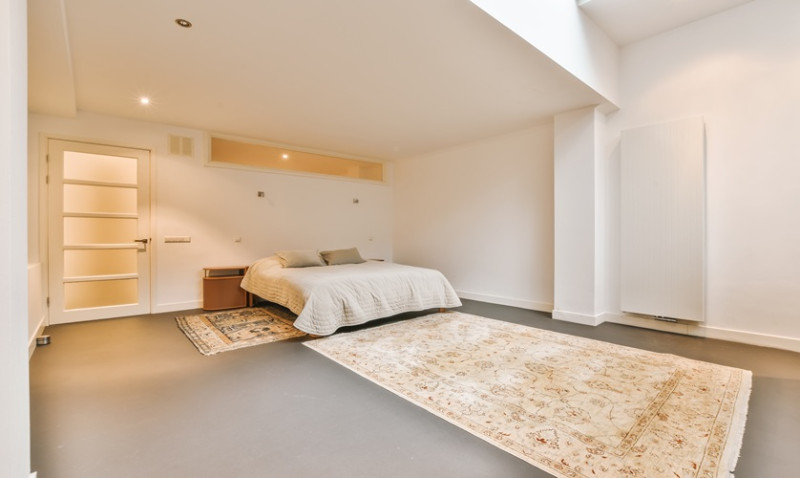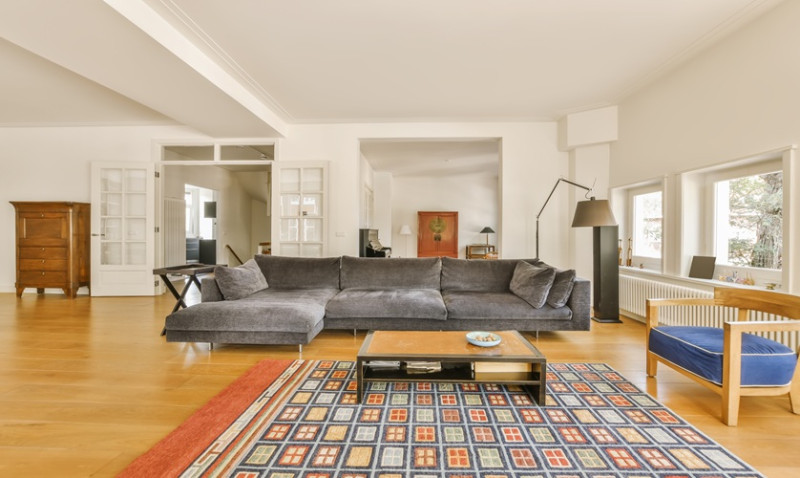
Choosing the right rug for your bedroom isn't as simple as picking the first plush one you see at your local homeware store. Whether you're a DIY enthusiast giving your space a refresh or an interior designer working on a client's brief, a bedroom rug can elevate comfort, define a space, and add texture—and getting it wrong can throw off the entire vibe of your room.
Below we’ll break down the three most common mistakes people make when choosing bedroom rugs, so you can avoid them and confidently select a piece that enhances your bedroom’s design and functionality.
1. Choosing the Wrong Rug Size
One of the biggest and most frequent mistakes people make is picking the wrong size rug for their bedroom. This isn’t about just filling some floor space—rugs act as visual anchors in your room and can influence how large and balanced the space feels.
Go too small, and your rug will feel like an afterthought. Too large, and it may overwhelm the room or interfere with pieces like wardrobes and dressers. Ideally, your rug should extend at least 18 to 24 inches around the bed's perimeter. If you’ve got a double or king-size bed, a rug that’s at least 200cm x 300cm typically works best.
Consider this: if your rug only peeks out a few inches from beneath your bed, it won’t showcase its texture or colour properly. This diminishes its design impact and can make the layout look unintentional. And if you're using smaller rugs on either side of the bed, make sure they are proportional and aligned—mismatched or undersized runners can break the design flow!
Here's a quick rug sizing guide for standard UK bed sizes to get you started:
| Bed Size | Recommended Rug Size | Rug Placement Tips |
|---|---|---|
| Single | 120cm x 180cm | Place to one side or centrally under the bed |
| Double | 160cm x 230cm | Extend rug under lower two-thirds of bed |
| King | 200cm x 300cm | Extend rug under entire bed and nightstands |
2. Ignoring Practicality and Maintenance
While appearance is important, don't overlook practicality when selecting your rug. A dreamy, high-pile shag might look soft and luxurious, but if you’re not prepared for the maintenance, it might become more frustration than feature.
Bedrooms see a surprising amount of foot traffic – especially in shared homes, households with kids, or if your bedroom doubles as a workspace. For these setups, opt for medium-pile or low-pile rugs that are easier to clean and more durable under regular use. If allergies are a concern, go for natural-fibre rugs like wool, jute, or even cotton blends as they tend to be hypoallergenic and breathable.
Spills and stains are also a factor. Do you have pets and breakfast-in-bed Sundays? If yes, steer clear of delicate materials like silk or viscose. Wool rugs offer a good balance between softness and robustness, and they can often resist minor staining due to their natural oils.
Also think about rug pads: these not only prolong the life of your rug but also provide safety by keeping it securely in place. The last thing you want is to slip when getting out of bed in the morning!
Long-term maintenance should also be part of your selection criteria. Ask yourself: how often are you willing to vacuum? What kind of cleaning products can you use? Can your vacuum even handle a thick pile rug? Make sure your rug choice fits your lifestyle, not just your Pinterest board inspiration.
3. Neglecting Style Harmony and Colour Balance
Your bedroom rug isn’t an island—it's part of a larger design ecosystem. Many people treat the rug as a standalone accent piece and forget to integrate its colour, pattern, and texture with the rest of their décor.
If you already have bold furniture, patterns in your curtains or bedding, or textured walls, you may want to choose a more neutral rug that complements rather than competes. Conversely, if your bedroom features lots of solids and subdued tones, a patterned or colourful rug could add a needed focal point and inject personality into the space.
Think about the mood you want to create. Soft neutrals, natural fibres, and earthy tones can bring a calm, grounded ambience—ideal for a relaxing sanctuary. On the flip side, jewel tones and layered patterns can make a bedroom feel eclectic, energetic, and full of character. Just be sure these choices align with your existing colour palette and theme to avoid visual chaos.
Another common mistake is not considering the undertones of your flooring and how they might clash with the rug. A modern grey laminate floor may not play well with a yellow-cream rug, for example. Always test samples or use augmented reality tools to preview rug styles in your space before purchasing.
Texture counts too. Complement soft linens and velvet throws with contrasting textures in your rug—think flat weaves, braided jute, or tufted designs. This brings more depth to the room and makes it feel well designed, even if your choices were made on a budget.
Final Thoughts
A well-chosen bedroom rug does more than just add warmth underfoot—it frames your furniture, elevates your style, and contributes to the overall balance of the room. By avoiding these three common mistakes—selecting the wrong size, overlooking practicality, and forgetting design cohesion—you place yourself firmly on the path to creating a dreamy, functional retreat.
Before laying down your next rug, take a moment to measure, plan, and envision. A little preparation goes a long way, especially when it comes to your bedroom—a space that should feel like home in every sense of the word.
#DIY #InteriorDesign #InteriorDesignTips #Ideas #UKHomes #BedroomStyle





